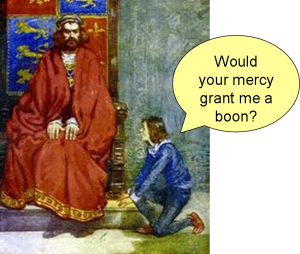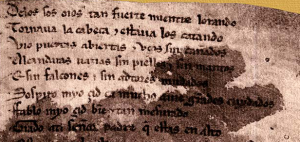It’s dangerously tempting to think of Catalan as a “melting pot” of Spanish, French, and Italian. Tempting, because Catalan has aspects of all three languages, and is spoken in their geographical midpoint (see map below). Dangerous, because the “melting pot” metaphor implies that the other three languages came together to form Catalan. In fact, all four are the product of slightly different versions of Vulgar Latin.

As long as we don’t fall for the “melting pot” fallacy, it’s fun to pick out the similarities between Catalan and its sister Romance languages. For example, Catalan has a letter ç, like French (e.g. Cat. abraçada “hug”), a /ts/ sound, like Italian (e.g. Cat. potser “maybe”), and two verbs for “to be”, like Spanish (Cat. esser and estar).
The most interesting differences between Catalan and Spanish have to do with vocabulary. Many Catalan and Spanish words come from two different Latin sources, such as Catalan voler “to want” (from Lat. volo, the source of French vouloir and Italian volere) versus Spanish querer (from Lat. quaerĕre), or Catalan nebot “nephew” (from Lat. nepote, the source of French neveu and Italian nipote) versus Spanish sobrino (from Lat. sobrīnus). As Ralph Penny explains in his awesome A History of the Spanish Language, the Spanish words usually reflect the older, more classical, variety of Latin that was spoken when Rome first conquered the Iberian Peninsula (between 200 and 17 BCE, relatively early in Roman history), while the Catalan words are more innovative. Because Catalonia is closer to Rome than the rest of the Peninsula, it kept up better with ongoing changes in Latin vocabulary.
Other vocabulary differences reflect the geographical realities of the post-Roman world. When Rome fell, the Visigoths invaded the Iberian peninsula from the north. Later (711 C.E.), the Moors invaded from the south. Germanic vocabulary therefore affected Catalan more than it did Spanish (e.g. guarir vs. sanar for “heal”, lleig vs. feo for “ugly”) while the Arabic impact was greater for Spanish than for Catalan (e.g. coixí vs. almohada for “pillow”, llogar vs. alquilar for “rent”). The two influences met in the middle for the word “blue”: Catalan’s Germanic blau and Spanish’s Arabic azul both displaced Latin caeruleus, the source of the the sophisticated English color term cerulean.
Follow the link below to download a table with a more substantial listing of vocabulary differences, including etymologies and French and/or Italian cognates.
Spanish vs. Catalan Vocabulary

